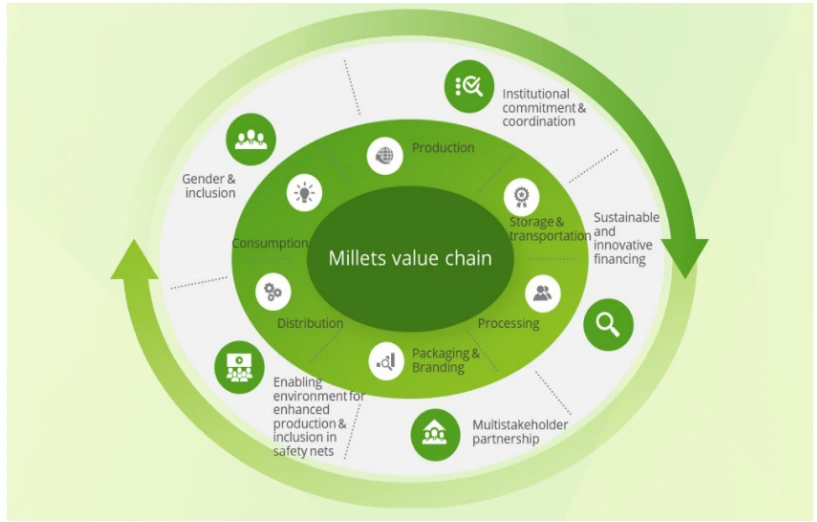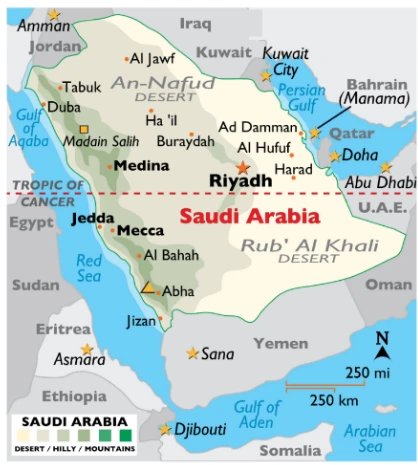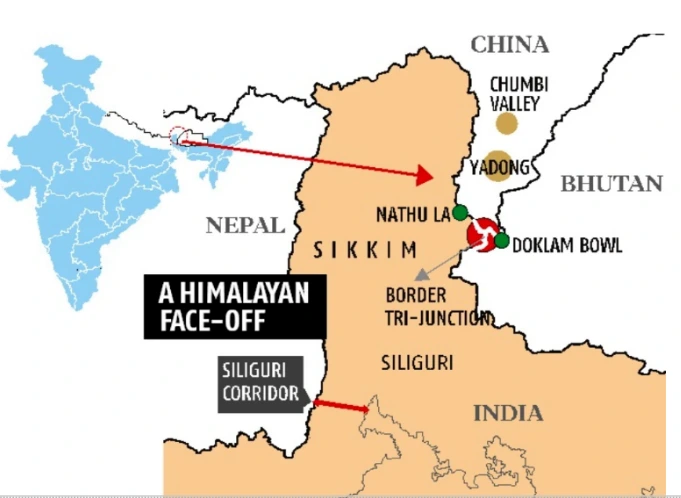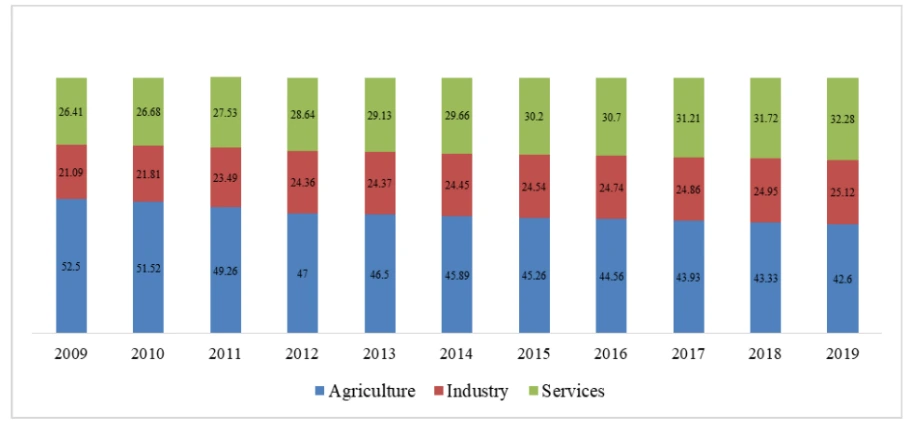23rd Standing Committee Report of the petroleum ministry recommends options to expand strategic petroleum reserves (SPRs) in the country.
Key Recommendations for Strategic Petroleum Reserves: Overground Storage, Reducing Crude Oil Dependency, and Funding Imperatives
News source: Business Standard
Launching MEGP Initiative, a compendium of field stories to help countries learn and invest in traditional climate resilient crops such as millet, etc was launched recently.

News Source: PIB
Recently, Chief of Staff, Royal Saudi Naval Forces Admiral Fahad Abdullah S Al-Ghofaily, was on a four-day official visit to India, strengthening naval cooperation

Further Reading: India Saudi Arabia Partnership: Navigating Opportunity, India Saudi Arabia Strategic relation: Bilateral collaboration and Beyond
News Source: TH
Mount Marapi on the Indonesian island of Sumatra erupted recently.

Additional Information: Volcano Eruption in Iceland
News Source: NDTV
There are 1,811 saltwater crocodiles in Odisha’s Bhitarkanika, the annual census reveals.
Saltwater Crocodiles: Giants of the Estuaries in India’s Bhitarkanika and Beyond
|
|---|
News source: Down to Earth
The President of India has greeted her fellow citizens on the eve of Lohri, Makar Sankranti, Magh Bihu and Pongal (which fall on January 13th, 14th and 15th respectively).
Additional Information: Makar Sankranti
News Source: PIB
The entire western Himalayas has been witnessing a prolonged dry spell with barely any hope for a revival in the next two weeks.
Western Disturbances (WD)
Jet Streams
|
|---|
News Source: Deccan Herald
Tshering Tobgay and the People’s Democratic Party (PDP) won the runoff election in Bhutan

Additional Reading: India-Bhutan Relations
Source: Indian Express
The Lancet Commission on Global Cancer Surgery noted that surgery is central to national cancer control plans.
In contrast, India’s new guidelines on non-communicable diseases (2023) that focus on cancer heavily have a sparse mention of surgery.
What is Global Health?
Global surgery & Sustainable Development Goals 2030
|
The Case of South Asia: Navigating Inequities, Disease Burdens, and Economic Impact
|
|---|
News Source: The Hindu
This editorial is based on the news “The geography of unequal growth” which was published in The hindu. The income Disparities in India’s states over the past three decades have increased significantly.
| State Domestic Product: The State Domestic Product is defined as the aggregate of the economic value of all goods and services produced within the State’s geographical boundaries, counted without duplication during a specified period, usually a year. |
|---|

Committees Related to Regional Imbalances:
|
|---|
The issue of regional development disparity must be given prime importance as 75 percent of the medium-term and 90 percent of long-term growth in the working-age population will occur in these states. If we fail to boost these states’ income and growth potential, India’s demographic dividend will become a demographic downfall, which could worsen political instability.
News Source: Business Standard
This editorial is based on the news “A case diary for the Indian police” which was published in The hindu. Recently, a three-day conference of police officers (Director General of Police level) from across India was held in Jaipur to bring a police reform in the policing system.
Conference Highlights: India’s Security Challenges – Borders, Cyber Threats, Radicalization, and AI Risks
|
|---|
Judicial Intervention in Prakash Singh v/s Union of India:
The seven main directives were:
|
|---|
SC Verdict on Newsclick Shows Adherence to Due Pro...
Stay Invested: On Chabahar and India-Iran Relation...
Credit Rating Agencies, Impact on India’s De...
Catapulting Indian Biopharma Industry
Globalisation Under Threat, US Import Tariffs Have...
Global Report on Hypertension, Global Insights and...
<div class="new-fform">
</div>
